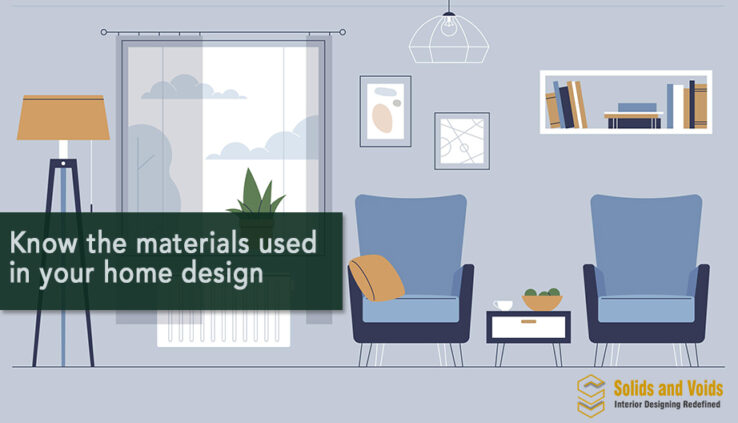Lot of thought goes into planning an ideal home design. Yet, when you look at the interiors of any home, there can be only two possibilities – either it appeals or just passes by as ‘just another home’. But as an interior designer one wouldn’t want the design to be disliked.
So, a lot of factors come into play while designing the best home for our clients. An interior designer has to meticulously select the materials required considering the budget, durability, comfort, safety and flexibility.
In this post we want to educate our readers about the materials used for a holistic home.
Wood
Varieties of wood is used for different purposes in home designing. Furniture, doors, window frames, even ceilings and floorings all can have a basic structure of wood. We have listed a few types of woods and where they can be used.
Teak Wood
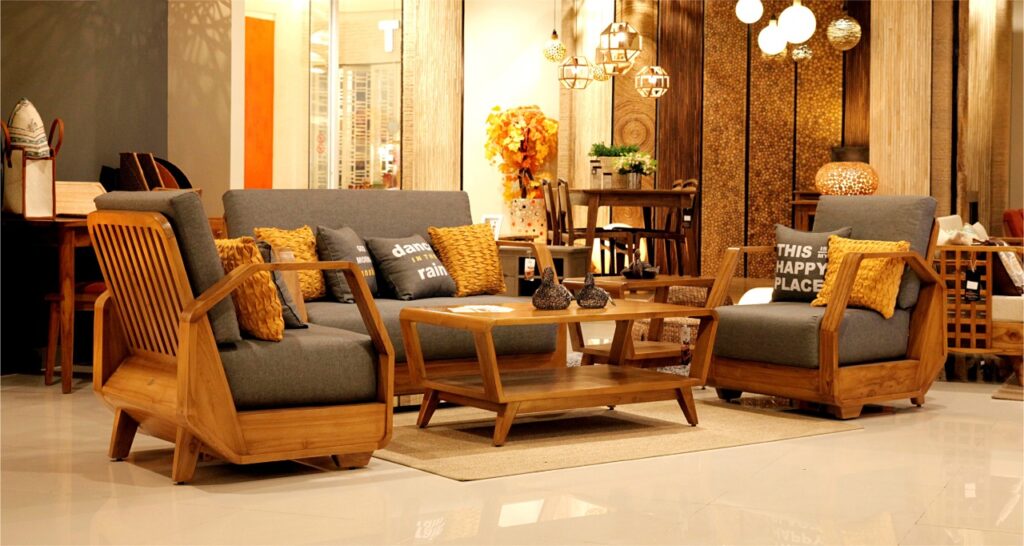
This is the most commonly used wood in interior designing. It is cost effective, strong, waterproof and above all India is one of the largest producers of Teak wood. Its durability and water proofing qualities make teak wood an ideal choice for cabinets, bed frames and carcasses of most of the non-mobile furniture.
Rosewood

Popularly known as Sheesham, Rosewood is another type of locally grown wood which is highly durable. Also, the polish finishings when applied on rosewood give a luxurious look. This is a bit more expensive than teak wood and hence can be used to give exclusivity to the design.
Mahogany Wood
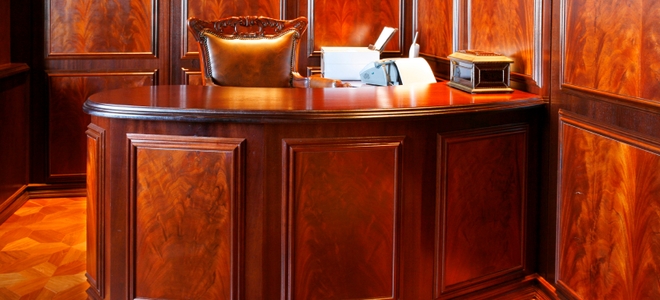
This one is commonly identified as the reddish-brown wood that looks classy. Its anti-moisture proprieties and natural affinity towards polishes make it ideal for crockery cabinets, doors and bed frames and fine carved furniture.
Oak Wood
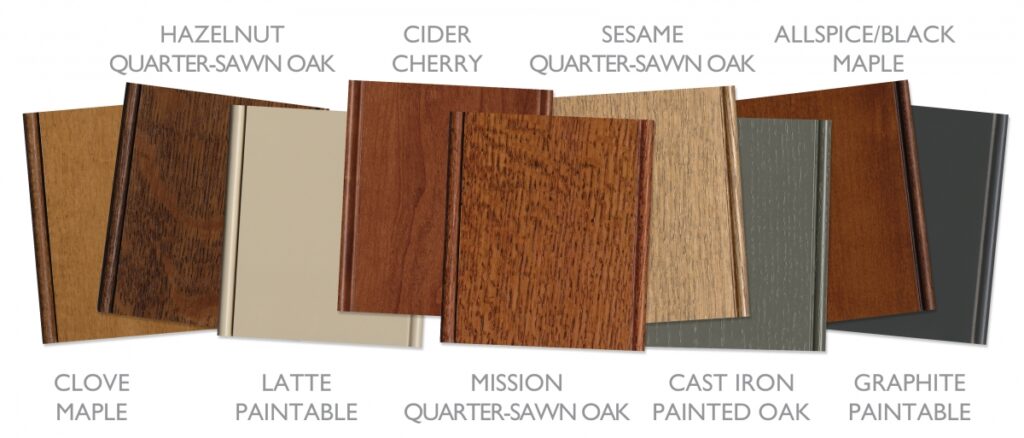
Oak wood comes in a variety of colors from white to dark brown. So oak wood is the ideal choice for matching colors and shades along with its appealing grain patterns. This becomes even more preferable due to its ability to withstand rough use.
Textile
Fabrics add colors and set the overall vibe of a space. They remain one of the underrated elements of home designing but in fact are the core of it. The overall mood and feel of a space can be enhanced by the right choice of colors and textures used for a fabric. Sofa and bed upholstery, chair covers, curtains and blinds, drapes, cushions, throws, bed sheets, mattresses, carpets- most of what is visible in home designing are fabrics. Furthermore, fabrics can be used for wardrobe shutters or as wall decors and canvases. So here are a few types of fabrics and where they should be used.
Cotton
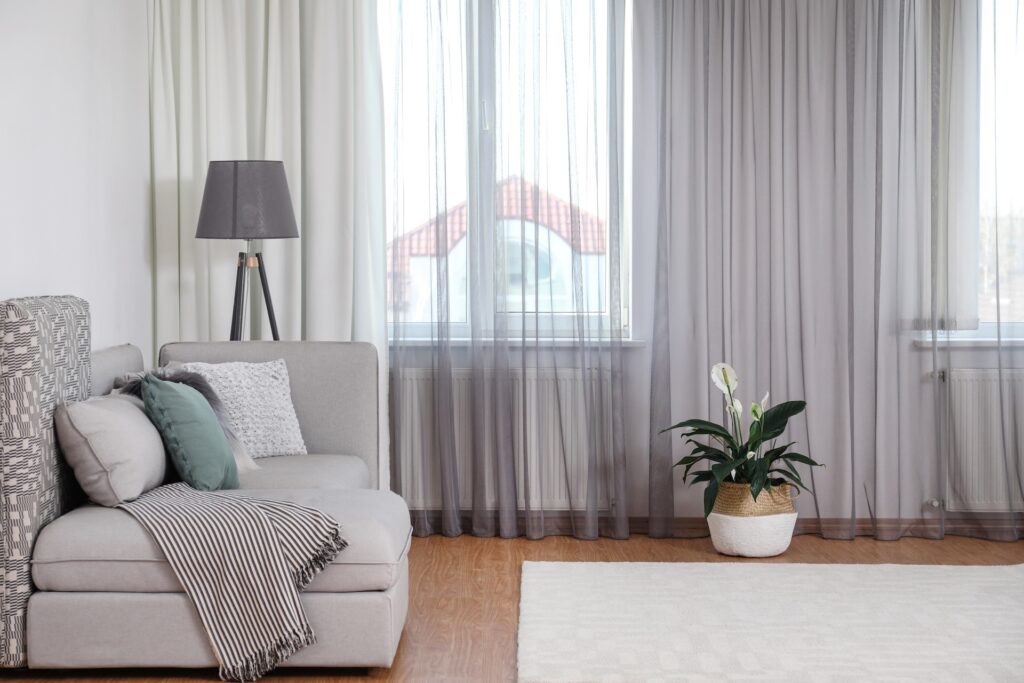
It is soft, durable, cost-efficient and light in weight. Above that it is natural, sturdy and quite versatile. Though cotton might be less elegant looking than silk, it gives the best comfort. However, it can lose its luster and texture with periodic washing.
Silk

Its natural sheen and softness give a rich feel. This elegant fabric is a style statement in itself. It is also one of the strongest natural fibers that retains its shape. This makes it perfect to use for adding a classy touch to your overall interiors. Its visual appeal makes it useful for window treatments and upholstery. It gives a grandeur feeling when you use decorative silk wall arts in place of wall paintings.
Linen
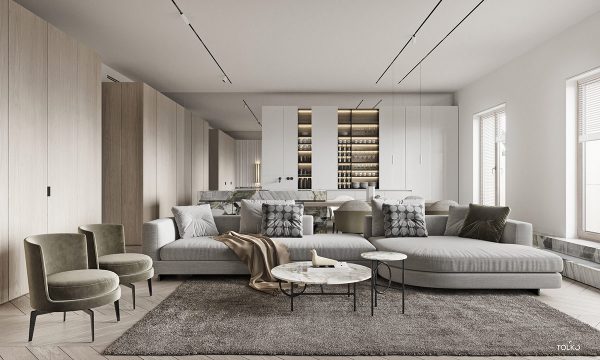
This fabric is so versatile that its texture changes depending on its weave. The diverse shades and textures of this fabric makes it easy to use for a natural and relaxed decor with its coarse look. With its tight weave and vibrant dye, you can even use this fabric to create a polished and high-end look. Although linen is an expensive fabric, it has always been an ideal choice for upholstery because of its durability.
Acrylic
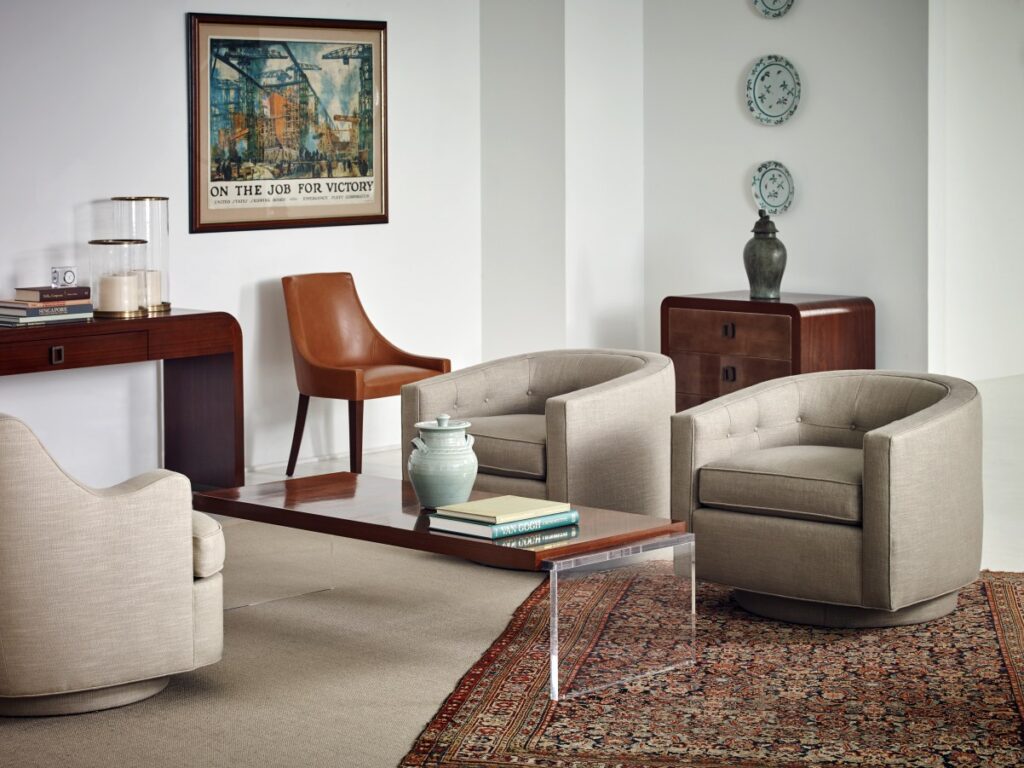
This is one of the man-made fibers that is recently gaining popularity because of its softness and durability. Acrylic is the most common substitute for wool. Its unique ability to retain colors for long duration and its resistance to stains and wrinkles makes it one of the most preferred fabric for upholstery. It is also easier to experiment various color schemes, textures and prints with this fabric.
Velvet
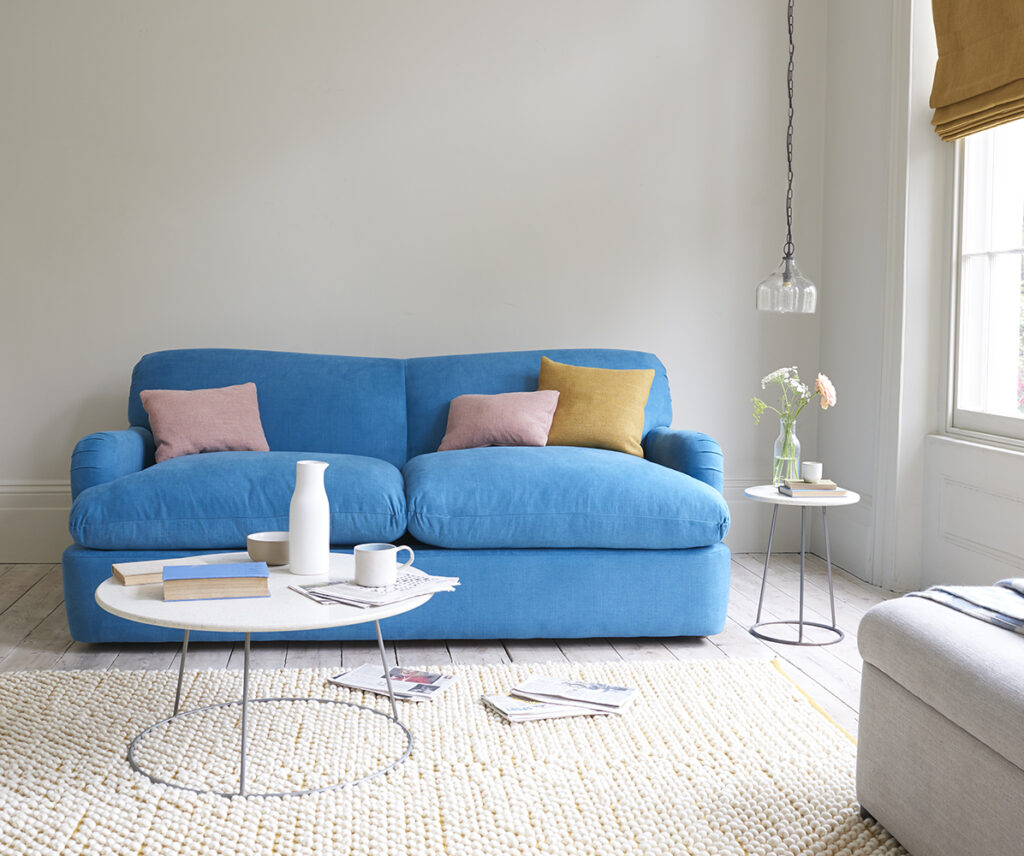
This is one of the most expensive and the most royal looking fabrics. It is made by weaving different fabrics together and it can be used for various purposes from large upholstered beds to small throw pillows. Velvets are often treated with stain repellents which makes it easier to maintain too. Velvet is built to last and it gets better with age. Its dazzling sheen makes velvet perfect to add glamour and richness to your space.
Stones
Stones are an essential part of interior designing. Stones are commonly used on your kitchen counter tops, door frames, flooring. Though it is better to use natural stones, the demand for consistency and uniformity has led to the evolution of artificial stones too. It is believed that artificial stones are cost affordable and easier to install but natural stones do stand the test of time. When it comes to authenticity and durability no man-made product can compete with any natural product. Listed below are some natural stones.
Granite
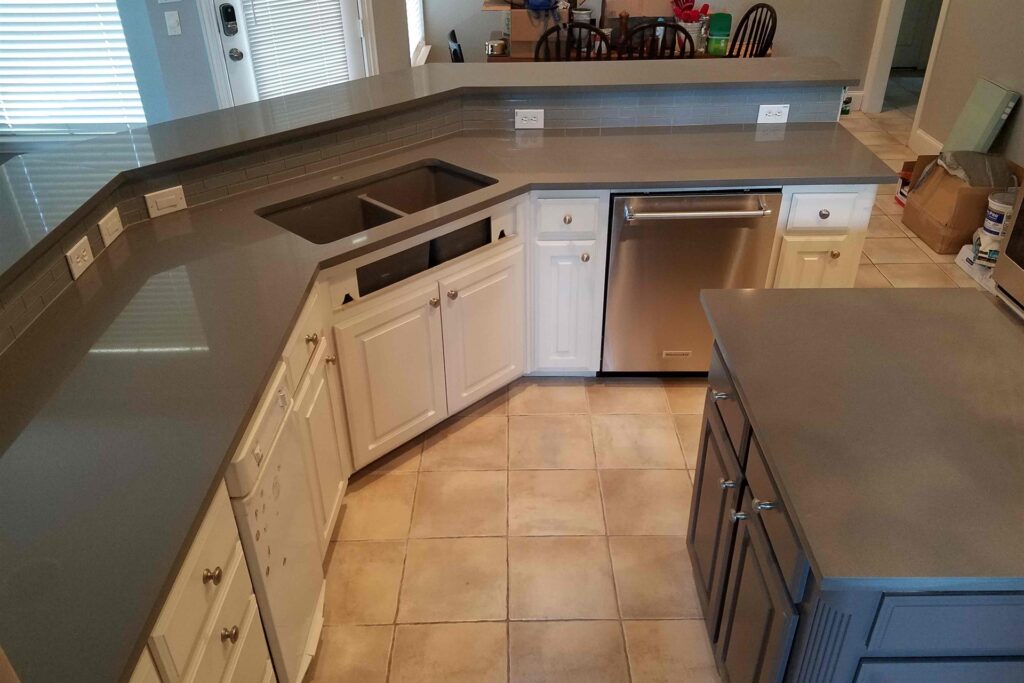
Granite is one of the most versatile of all the natural stones because of its high-level density and resistance to bacteria and stains. These properties make granite the best suited stone for kitchen counter tops and worship areas. Colors of these vary depending on their mineralogy.
Marble
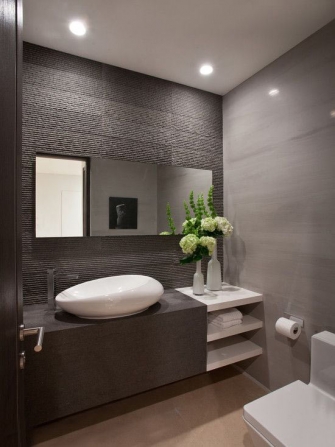
This too is a natural stone but it is not as hard as granite. But it is elegant, easy to clean and combines well with ceramic and wood. Marble is generally used as window sills, bathroom flooring. Since it is a softer stone compared to granite, marble is used extensively for carvings and sculptures in worship areas.
Sandstone
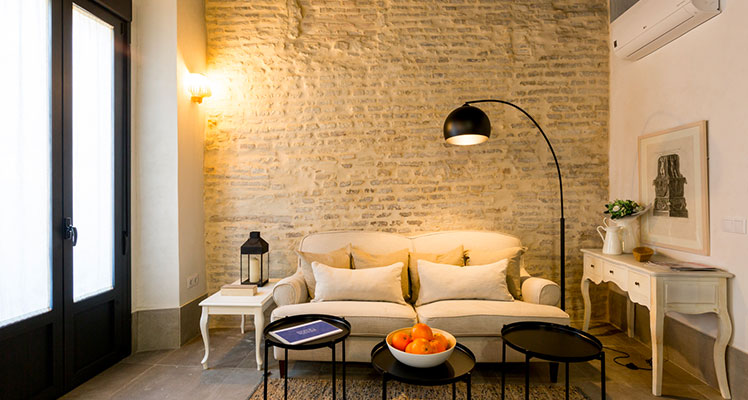
Sandstone is harder and more resistant to stains than granite. It is also moisture resistant. This makes sandstone ideal for flooring tiles along with using it for making ornamental structures, temples, idols and decorative artwork.
Glass
Interior designing is about creating a splendid space and when it comes to materials, glass plays a major role in adding style and sophistication to your overall design. In interiors, glass can be used on doors, windows, walls and even as partitions. We have listed a few types of glass that are generally used in home design.
Toughened Glass

As the name suggests, toughened glass is five times stronger than the ordinary glass and it is made to withstand all weather conditions. Its advantage is, if it breaks, it will shatter into small pieces without any sharp edges. This glass is generally used to flawlessly cover large spans with minimal obstructions. Large frame less glass doors, windows and partitions, shower cubicles- that’s where you should ideally use toughened glass.
Tempered Glass
This glass is almost the same as toughened glass and often they can be used interchangeably. This extremely durable type of glass is lighter than the toughened glass which makes it easier to use tempered glass for designing your ceiling. Its strong thermal resistance properties make this a perfect choice for using it as dining table tops and kitchen backsplash. You can also use tempered glass for shelves in your homes.
Sandblasted Glass
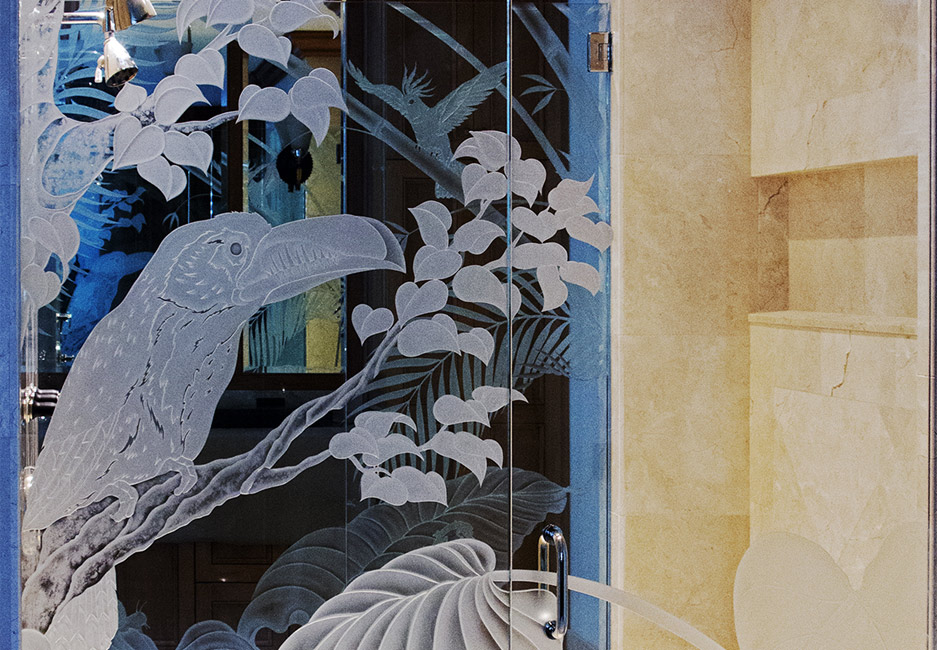
Sandblasted glass is one that has a milky white appearance and is translucent. Sandblasting is the process by which this glass is produced. By spraying sand at high velocities over the glass surface, the surface gets translucent and appears to be milky white. The areas which need to be transparent are masked before spraying the sand and you can create beautiful designs on the glass. Hence, this method of sandblasting can be used to create intricate design patterns.
Stained Glass
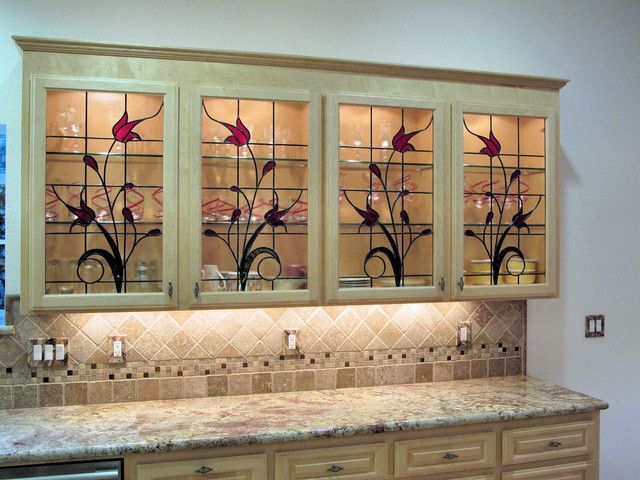
Stained glass is being used in architecture and interior designing since centuries. This colored glass was commonly used in window panes of old structures and monuments. Stained glass is made by using metallic oxides to color the glass, then it can either be textured or painted. Using this glass is one of the age-old techniques of beautifying a space. In the contemporary interior designs, we have moved beyond just using stained glass for window panes. Today it can be used for decor pieces, candle holders, flower vase, bulb holders etc. It has innumerable applications to beautify your home.
Textured Glass
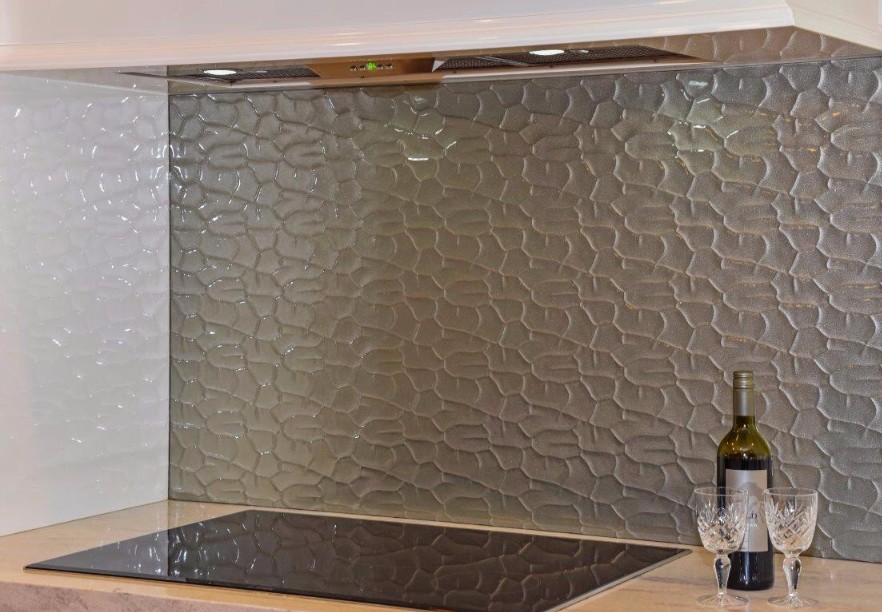
The desired pattern and texture is imprinted on one side of the glass surface when it is in the molten state. This glass retains its smoothness and gives a textured feel which allows sunlight to penetrate and maintain privacy. Textured glass is used in houses as windows, bathroom windows and dividers and screens to bifurcate areas.
Clear and Frosted Glass
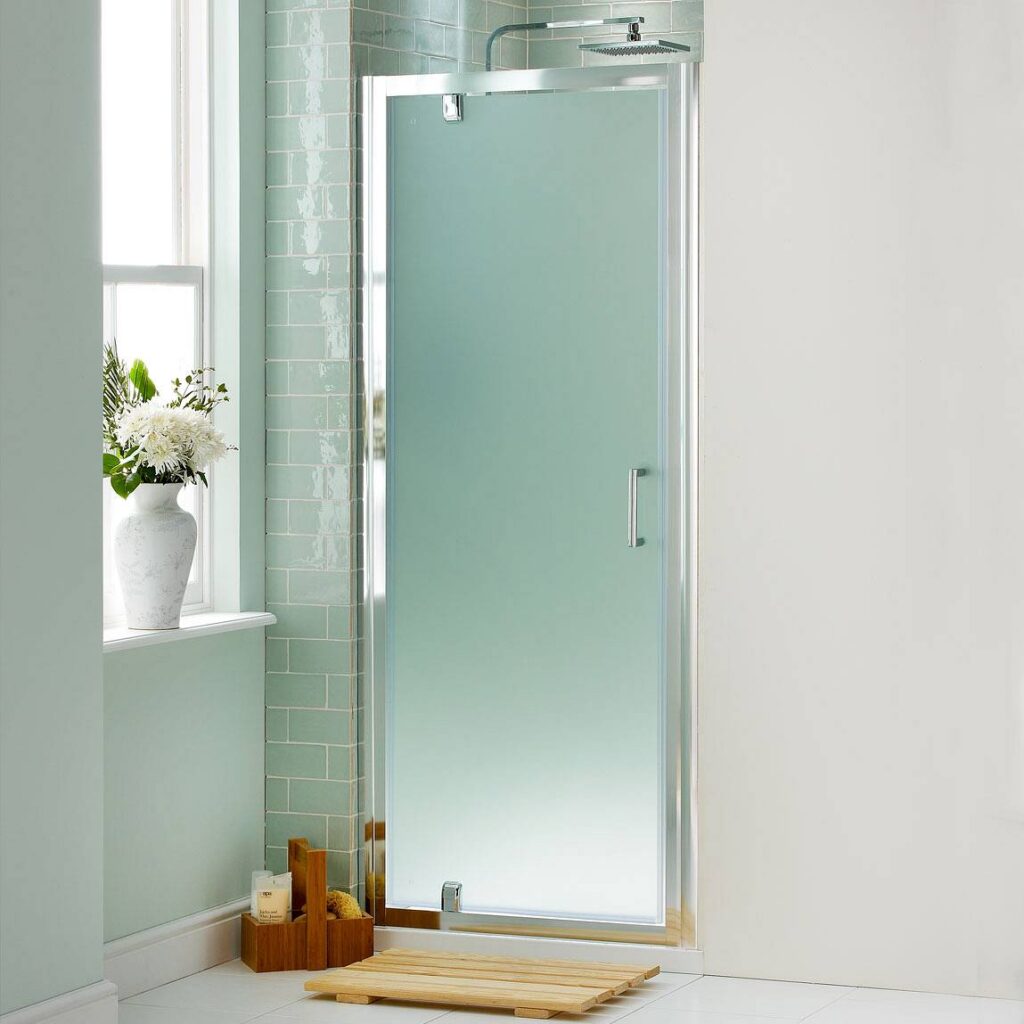
Frosted glass is a clear sheet of glass that is turned opaque through various processes. The frosted effect can also be achieved by applying vinyl films or using frosted glass sprays, but the aesthetic feel of frosted glass is something that gives your space a luxurious feel. The main purpose of this glass is to provide privacy and at the same time give a lavish look to your space.
Fluted Glass
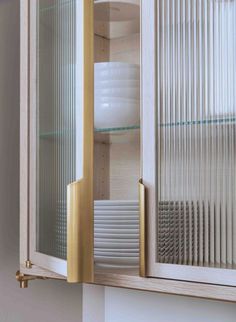
The ability to maximize privacy and let in ample of natural light, makes fluted glass one of the fast-emerging trends in interior designing. Technically, this is a type of textured glass but its uniform patterns of vertical grooves have made a fluted glass a type in itself. Kitchen cabinet doors, bathroom partition, bar-cabinets- this glass can be used anywhere to break the visual monotony.
Glass Brick Wall

The blocks or the glass bricks are manufactured separately and then they are tempered together to make a glass brick wall. They are generally used as partition walls between two spaces. Glass brick wall can be made in a variety of colors and degrees of transparency. You can even use glass brick wall in a patch of flooring to segregate spaces. If you are struggling with small space, then you must read these five tips for designing small spaces.
So, these are the basic types of materials used in almost every home design in various ways. Over the time designers and architects have specialized in creating biophilic interior designs which uses only natural elements. You can read about it here.




